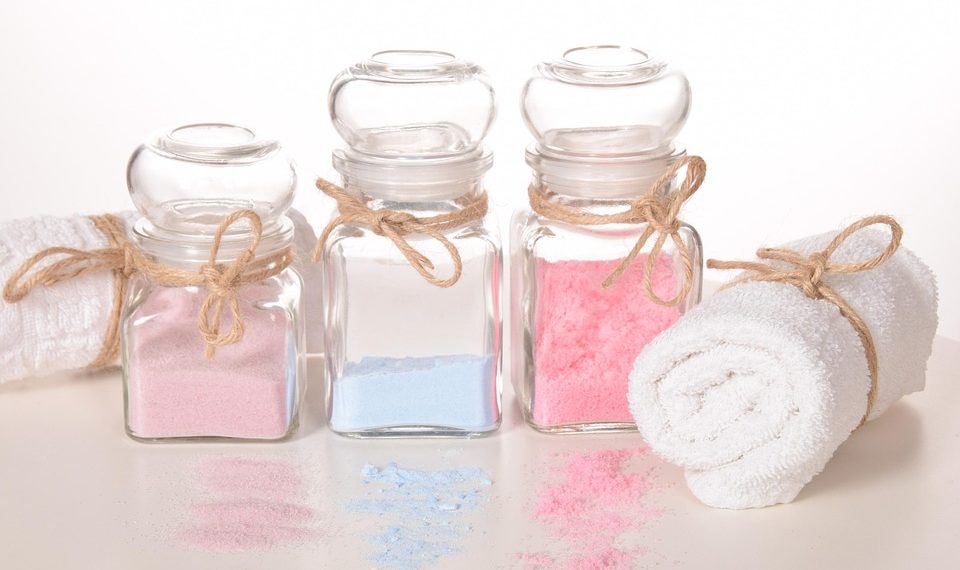Contents
- 5 Soothing Epsom Salt Bath Tips for Tendon Relief
5 Soothing Epsom Salt Bath Tips for Tendon Relief
Have you ever had one of those days where your tendons feel like they’ve been through a marathon—even if you haven’t run a step? You know, that nagging tightness in your wrists or the dull ache in your Achilles? I’ve been there too, and it can be downright frustrating. While there are many remedies out there, one surprisingly simple solution stands out: Epsom salt baths.
Epsom salt, or magnesium sulfate, has been touted for its potential therapeutic benefits, especially for muscle and tendon relief. But how do you maximize its effects? Let’s dive into five soothing tips for using Epsom salt baths to help alleviate tendon discomfort.
Understanding Epsom Salt and Its Benefits
Before we get into the tips, let’s chat a bit about why Epsom salt is so popular for tendon relief. When dissolved in warm water, Epsom salt breaks down into magnesium and sulfate, both of which can be absorbed through the skin. Magnesium plays a crucial role in muscle function and can help reduce inflammation and pain. A study published in the Journal of Pain Research highlights that magnesium can improve muscle function and reduce discomfort (Wang et al., 2016).
So, if you’re looking to soothe those tendons, Epsom salt might just be your new best friend. Now, let’s get into the tips!
1. Choose the Right Temperature
When it comes to baths, temperature matters. A warm bath can enhance the absorption of magnesium while also promoting relaxation. Aim for a water temperature between 92°F and 100°F (33°C to 38°C).
Pros:
- Warm water helps increase blood flow, which can speed up recovery.
- It relaxes muscles, making it easier for the magnesium to work its magic.
Caveats:
- Avoid water that’s too hot, as it can lead to dehydration or dizziness.
2. Use Enough Epsom Salt
It might sound obvious, but many people skimp on Epsom salt. For effective relief, you’ll want to add about 2 cups (about 500 grams) of Epsom salt to your bath.
Pros:
- Higher concentrations can lead to better absorption of magnesium.
- It provides a more soothing experience.
Caveats:
- Don’t overdo it—using excessive amounts won’t necessarily enhance the benefits and could lead to skin irritation.
3. Add Essential Oils for Extra Relaxation
If you’re looking to elevate your bath experience, consider adding a few drops of essential oils. Lavender, for example, is known for its calming properties and can help reduce stress, which is often tied to muscle tension.
Pros:
- Aromatherapy can enhance relaxation and improve your mood.
- Some oils, like peppermint, can provide a cooling sensation that may help with inflammation.
Caveats:
- Always do a patch test first, as some essential oils can irritate sensitive skin.
4. Incorporate Gentle Stretching
While soaking in the tub, why not take a few minutes to do some gentle stretching? This can help improve flexibility and blood flow to your tendons while you enjoy the soothing effects of the Epsom salt.
Pros:
- Stretching can enhance the benefits of the bath by promoting circulation.
- It helps maintain flexibility and reduce stiffness.
Caveats:
- Listen to your body. If you feel pain while stretching, stop immediately.
5. Stay Hydrated
One often overlooked aspect of taking a hot bath is hydration. It’s easy to forget to drink water while you’re relaxing, but staying hydrated is crucial, especially when soaking in warm water.
Pros:
- Hydration supports overall muscle function and recovery.
- It helps prevent dizziness and overheating.
Caveats:
- Keep a water bottle nearby to remind yourself to sip throughout your bath.
FAQs About Epsom Salt Baths for Tendon Relief
Q: How often should I take Epsom salt baths for tendon relief?
A: It’s generally safe to take Epsom salt baths 2-3 times a week, but listen to your body. If you’re feeling sore, more frequent baths may be beneficial.
Q: Can Epsom salt baths help with chronic tendon issues?
A: While they can provide temporary relief, chronic issues may require medical attention. Always consult a healthcare provider for persistent pain.
Q: Are there any risks associated with Epsom salt baths?
A: Generally, Epsom salt baths are safe. However, individuals with certain medical conditions (like kidney issues) should consult a doctor before using them.
Q: Can I use Epsom salt in a foot bath?
A: Absolutely! Foot baths can be a great way to target tendon discomfort in the feet and lower legs. Just use about 1 cup of Epsom salt in warm water.
Conclusion: Embrace the Soothing Power of Epsom Salt
Taking a moment for self-care can make a world of difference, especially when dealing with tendon discomfort. Epsom salt baths are a simple yet effective way to promote relaxation and potentially ease your pain. By following these tips—like choosing the right temperature, using enough salt, and incorporating essential oils—you can create a soothing environment that helps your tendons recover.
So, the next time you’re feeling a little tight or sore, why not treat yourself to a relaxing Epsom salt bath? Your tendons might just thank you for it.
Disclaimer: This article is for educational purposes only and is not a substitute for professional medical advice. Always consult a qualified healthcare provider before making changes to your health routine.
References
-
Wang, Y., Zhang, H., & Wang, Y. (2016). The role of magnesium in muscle function: A systematic review. Journal of Pain Research, 9, 295-302. https://doi.org/10.2147/JPR.S105214
-
Mayo Clinic. (2021). Epsom salt: Benefits and risks. Retrieved from https://www.mayoclinic.org/healthy-lifestyle/consumer-health/in-depth/epsom-salt/art-20046460
-
Cleveland Clinic. (2022). Epsom salt: What you need to know. Retrieved from https://my.clevelandclinic.org/health/diseases/21144-epsom-salt
Get Your FREE Natural Health Guide!
Subscribe now and receive our exclusive ebook packed with natural health tips, practical wellness advice, and easy lifestyle changes — delivered straight to your inbox.















